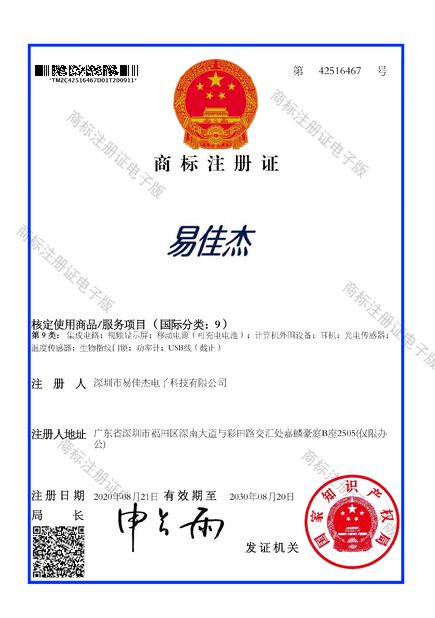In fields such as industrial safety, environmental monitoring, and medical devices, electrochemical oxygen sensors are critical tools for ensuring safety and accurate monitoring. With increasing market demand for high-precision, low-cost sensors, choosing the right product for your industry has become a key consideration in business-to-business (B2B) procurement decisions. In this article, we will analyze the key concerns of B2B users and help you choose the right oxygen sensor.
1. What is an electrochemical oxygen sensor?
An electrochemical oxygen sensor uses a chemical reaction to detect oxygen concentration in the air. It measures gas concentration by inducing a reaction in an electrochemical cell and measuring it through changes in electrical current. Compared to traditional physical sensors, electrochemical sensors offer not only higher sensitivity but also longer lifespans and greater stability, making them suitable for a variety of industrial and environmental monitoring scenarios.
Keywords: electrochemical gas sensor, oxygen sensor, electrochemical sensor operating principle
2. What are the main advantages of electrochemical oxygen sensors?
When selecting a gas sensor, B2B users are often most concerned about its performance stability and accuracy. Electrochemical oxygen sensors offer the following key advantages:
High sensitivity and accuracy: They can accurately detect low concentrations of oxygen.
Long Service Life: Most electrochemical sensors have a lifespan of over two years, making them suitable for long-term use.
Adaptable: They are suitable for a variety of environments, including industrial, medical, and environmental monitoring.
Cost-Effective: Compared to infrared sensors, electrochemical sensors generally have a lower purchase cost.
Keywords: Advantages of electrochemical oxygen sensors, oxygen concentration detection, long-life sensors
3. How to judge the quality and performance of an oxygen sensor?
When selecting an oxygen sensor, users should consider the following key factors:
Response time: The speed of the sensor's response is crucial, especially in hazardous environments.
Sensitivity and accuracy: Ensure the sensor can operate accurately at low concentrations.
Temperature and humidity range: Some high-temperature and high-humidity environments require the sensor to operate stably under harsh conditions.
Reliability and stability: Long-term stability is critical, especially in applications requiring long-term monitoring.
Keywords: Oxygen sensor response time, sensor sensitivity, gas sensor quality
4. What are the application scenarios of electrochemical oxygen sensors?
Electrochemical oxygen sensors have a wide range of applications. The following are some typical applications:
Industrial safety: Real-time monitoring of oxygen concentrations in hazardous environments such as chemical plants and mines to prevent poisoning or explosions.
Environmental monitoring: For example, urban air quality monitoring to promptly detect oxygen changes and assess environmental safety.
Medical equipment: In medical devices such as portable oxygen monitors and ventilators, ensuring that patient oxygen levels meet requirements.
Fire monitoring: Monitor oxygen concentration in high-risk warehouses, oil depots, and other places to reduce fire risks.
5. How do I choose the right oxygen sensor for my industry?
Different industries have different requirements for oxygen sensors. When choosing an oxygen sensor, consider the following:
Detection Accuracy: High-precision sensors are suitable for industries with high precision requirements, such as medical and aviation.
Usage Environment: Temperature, humidity, and the presence of chemicals can affect sensor performance, so you need to choose a sensor with strong environmental adaptability.
Cost Budget: Choose a sensor with a reasonable cost and lifespan based on the industry and frequency of use.
6. Maintenance and Calibration: How can I extend the lifespan of an electrochemical sensor?
Electrochemical oxygen sensors generally have a long lifespan, but they still require regular maintenance and calibration:
Regular Calibration: Ensures sensor accuracy and avoids data deviations caused by long-term use.
Environmental Monitoring: When used in extreme temperature and humidity conditions, the sensor needs to be regularly checked for malfunctions.
Regular Replacement: Although electrochemical sensors have a long lifespan, they still need to be replaced promptly at the end of their lifespan to avoid affecting monitoring results.
7. What is the cost-effectiveness of electrochemical oxygen sensors?
Compared to other types of gas sensors, such as infrared sensors, electrochemical oxygen sensors generally offer a more cost-effective solution:
Low initial investment: While the initial purchase cost is low, performance is not compromised.
Low maintenance costs: Compared to other sensors, electrochemical oxygen sensors require less maintenance and calibration, resulting in relatively low long-term operating costs.
High performance: Electrochemical sensors provide highly accurate measurement results even at low oxygen concentrations, helping companies reduce operating costs.

 Your message must be between 20-3,000 characters!
Your message must be between 20-3,000 characters! Please check your E-mail!
Please check your E-mail!  Your message must be between 20-3,000 characters!
Your message must be between 20-3,000 characters! Please check your E-mail!
Please check your E-mail! 

